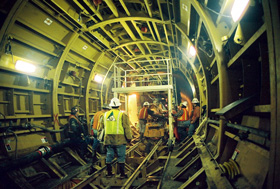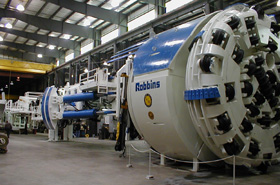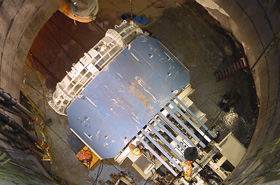




Chattahoochee Tunnel Project









One of two Robbins tunnel boring machines assembled at the factory.
View from top of construction shaft
looking down on tunnel boring
machines being assembled.


Accomplishments:
As part of its public outreach and community involvement program, Parsons personnel visited each resident immediately adjacent to the tunnel alignment to discuss what to expect as the TBM passed. This one-on-one attention was well received and succeeded in minimizing complaints.

After driving 22,000 feet, the tunnel boring machine breaks through into the Circle 75 shaft.
Left to right: Ted DePooter (JA), Fred Estep (Parsons), Denver Chandler (Parsons), Mark Tilly (JA), David Rendini (Parsons), John Geyer (Parsons), Dwayne Easterling (JA).

Parsons performed seismograph monitoring of vibrations along the length of the alignment while the tunnel was being excavated. Backed up by pre-excavation surveys of structures, the seismic records provide a means to evaluate any damage claims by residents.
Numerous comments during the preconstruction constructability and biddability reviews helped refine the project documents to obtain the best pricing among competitive bids.
Parsons worked with the design engineer, owner, and contractor to revise rock bolt requirements, thus saving $500,000. Parsons is working with these same people to develop a secondary grouting program that will minimize impacts from groundwater inflows in the most cost-efficient manner.
While a project’s success is typically measured at its completion, the ability to achieve that success is present each working day. Parsons used its considerable experience in construction management of large underground projects to identify problems at the earliest stage, resolve problems in a time effective manner at the lowest level, and mitigate impacts to this immense project. The project is scheduled to be completed in December of 2004 within the original project budget.
For more information, visit the project website: www.chattahoocheetunnel.com

